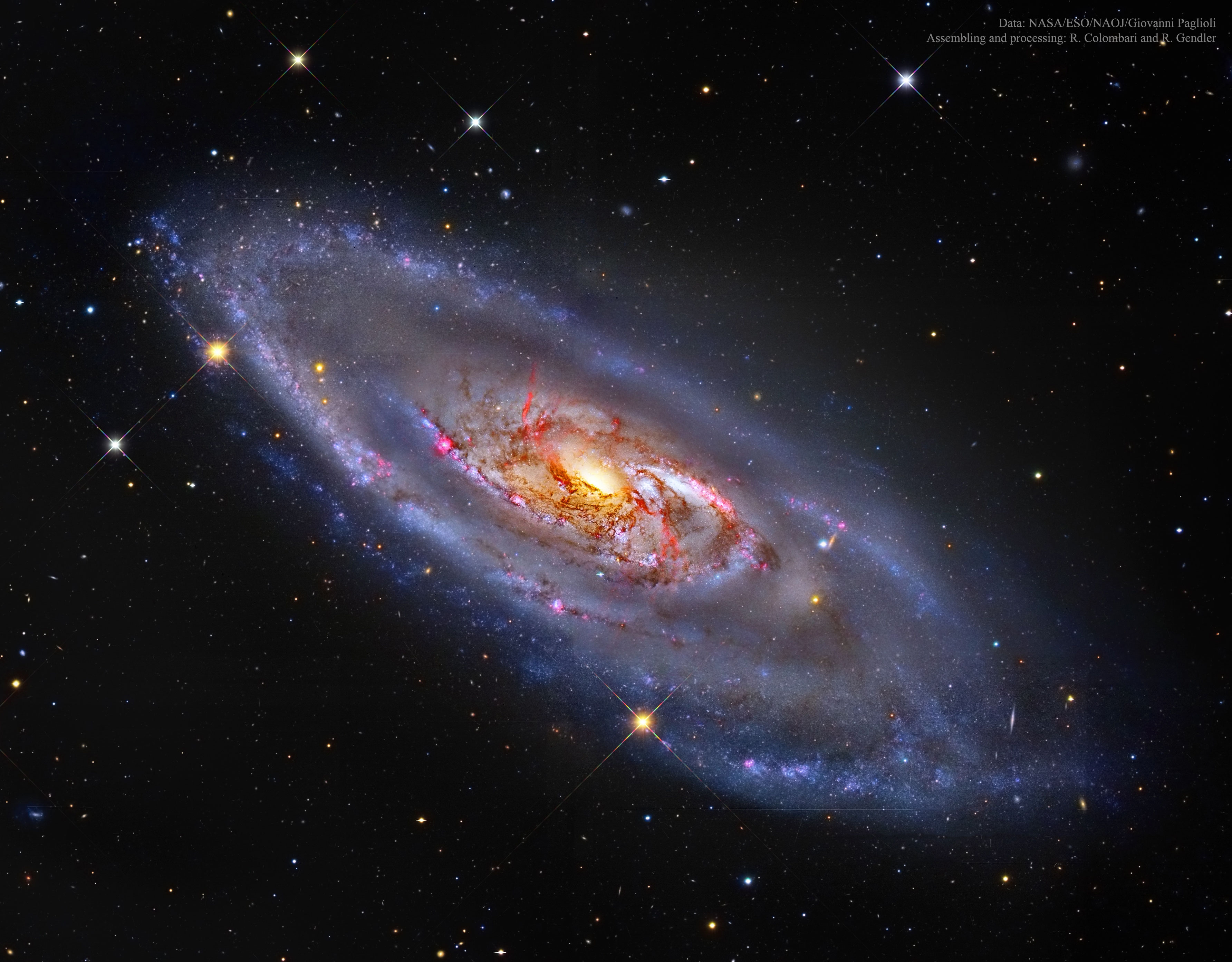
Copyright:
原文:
What’s happening at the center of spiral galaxy M106? A swirling disk of stars and gas, M106’s appearance is dominated by blue spiral arms and red dust lanes near the nucleus, as shown in the featured image. The core of M106 glows brightly in radio waves and X-rays where twin jets have been found running the length of the galaxy. An unusual central glow makes M106 one of the closest examples of the Seyfert class of galaxies, where vast amounts of glowing gas are thought to be falling into a central massive black hole. M106, also designated NGC 4258, is a relatively close 23.5 million light years away, spans 60 thousand light years across, and can be seen with a small telescope towards the constellation of the Hunting Dogs (Canes Venatici). Astrophysicists: Browse 1,000+ codes in the Astrophysics Source Code Library
中文翻譯:
在螺旋星系M106的中心發生了什麼事?M106 以旋轉的恆星和氣體圓盤為主體,其外觀特徵包括藍色的螺旋臂和靠近核心的紅色塵埃帶。M106的核心在無線電波和X射線中明亮發光,並發現了雙重噴流沿星系的長度延伸。這種異常的中心光度使M106成為最接近的 Seyfert 類星系之一,這些星系中大量的發光氣體被認為正朝著中央的巨大黑洞沉降。M106(亦稱NGC 4258)距離地球約2350萬光年,橫跨約6萬光年,並可以在獵犬座(Canes Venatici)用小型望遠鏡觀察到。
#M106 #SeyfertGalaxy #Astrophysics #BlackHole #SpaceExploration #宇宙探索 #星系觀察 #天文學 #NGC4258 #螺旋星系 #無限宇宙 #科學探索
來源:NASA每日圖片


